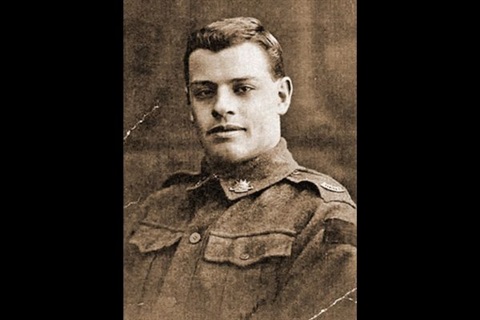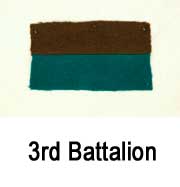Boniface, George Lawrence

George was born 19 June 1892 at 'Spring Cottage', Bland Street, Kiama, the youngest child of Ben and Mary Boniface.
After attending Kiama Public School, it is believed George worked at local farms and quarries. When the family moved to 'Happy Villa' he became involved with his brother Harry in the farm and milk vending business established by them.
At some time prior to the outbreak of WW1, George was a member of the Kiama Militia Unit 'E' Company. The results of a monthly shoot shows that he was graded as a 'B' class shooter.
George was of a genial nature with a keen sense of humour, generous to a fault and slow to anger.
Enlisting in August 1915, aged 23, George embarked with the 12th reinforcements to the 3rd Battalion in January 1916.
George suffered wounds on two occasions, the first being a serious gunshot wound to the neck. On 24 July 1916, George Boniface was admitted to hospital in Etaples for his neck wound. He was treated in France and then evacuated per HS Dieppe to England, where he was admitted to the No. 23 General Hospital in Sheffield. He was later transferred to the 3rd Northern General Hospital, on 2 August 1916. George Boniface was discharged to Tidworth on 3 August 1916 to recuperate. During his convalescence in England, he visited his mother’s relatives, the Holdens, at Kendal in the County of Westmoreland (now Cumbria). He then rejoined his battalion on 20 December 1916.
George Boniface spent another two weeks in hospital in May 1917, and he was wounded again, on 14 April 1918, and hospitalised until 8 May 1918. George Boniface was appointed Lance Corporal on 27 July 1918, but by 1 August was returned to hospital. He remained there until his discharge to the Base Depot on 21 September 1918.
Returning to Australia on 20 April 1919 aboard the Boonah, George arrived in Kiama on 12 June 1919. He was given a welcome at the railway station by the Mayor, and later a welcome home by his family at 'Happy Villa'.
George was awarded the 1914/15 Star, British War Medal and Victory Medal for his service.
After being discharged, on 3 August 1919, George again became involved in the milk vending business, which had been conducted by his brother Harry during the war years. 'Happy Villa', had been sold without the Boniface family being offered the choice to purchase, and so the family had moved to 'Belmont' on the foothills of Saddleback Mountain. In 1920, Harry, dissatisfied with financial arrangements, moved to Wollongong. George and his parents moved to 'Belmont' and continued with the milk vending business.
On 11 June 1921, George married Pauline Anslow at Marrickville. A city girl with a bright, cheery disposition, Pauline returned to 'Belmont' and became involved in house and farm activities for the rest of her life.
George and Pauline had five children - Esma Jean, Cecil George, Kenneth William, Violet Mary, and Leslie Paul.
About 1926, the milk run was sold, and George concentrated on dairy farming, over the years gradually adding to the size of the farm.
Dairy farming gave George little scope for any sport, although he had played football in his early years and was a member of the Kiama Rifle Club. He found an outlet in fox shooting. He was an excellent shot and rarely missed bagging a fox. This activity enabled him to gain an intimate knowledge of the mountain area west of Kiama, as he ranged far and wide in pursuit of the fox.
George was often prevailed upon by the Police for assistance in guiding them through or giving information about the rainforests of Saddleback Mountain, one notable instance being to the crash site of a R.A.A.F. plane on the escarpment at Foxground.
George and his family were of a most hospitable nature, generous to a fault, with a large circle of friends, and were widely known throughout the area.
Pauline, who had developed into an excellent cook, had, on occasion during the years up to 1945, to cope with up to 18-25 people for a midday dinner and evening meal. As well, during the Depression years up to 1935, she cared for Herb Boniface and his sons, Albert and Geoff.
On the death of George’s mother in 1936, George and Pauline undertook the unenviable task of caring for his father Ben, who was suffering from a heart ailment and was confined to bed for most of the time. This continued until his death in 1943.
The arrival of electricity to 'Belmont' in the late 1940s led to the installation of milking machines and other appliances to make George and his family’s way of life more comfortable.
Misfortune happened in 1965, when George's wife Pauline was involved in an accident as a passenger in a car driven by her niece, Phyllis Brown. She suffered a fractured hip and lived on for some time in hospital, eventually dying of pneumonia on 29 January 1966 at Bankstown Hospital, aged 72.
George’s son Leslie gradually took over the farm, before George himself suffered an illness and died in Baringa Hospital, Wollongong, on 28 April 1974, aged 81. His brother Harry was a patient in the adjacent bed and died two months later.
George was cremated at Wollongong after a funeral service in the Kiama Methodist Church. His ashes were placed with Pauline’s in the gardens at Wollongong Crematorium.
Kiama Library acknowledges the research of the Boniface family.
Service record
Name: BONIFACE, George Lawrence
Service No.: 3696
DOB: 19 June 1892
Birthplace: KIAMA
Rank: Private
Fate: Returned 11 June 1919
Unit(s):
